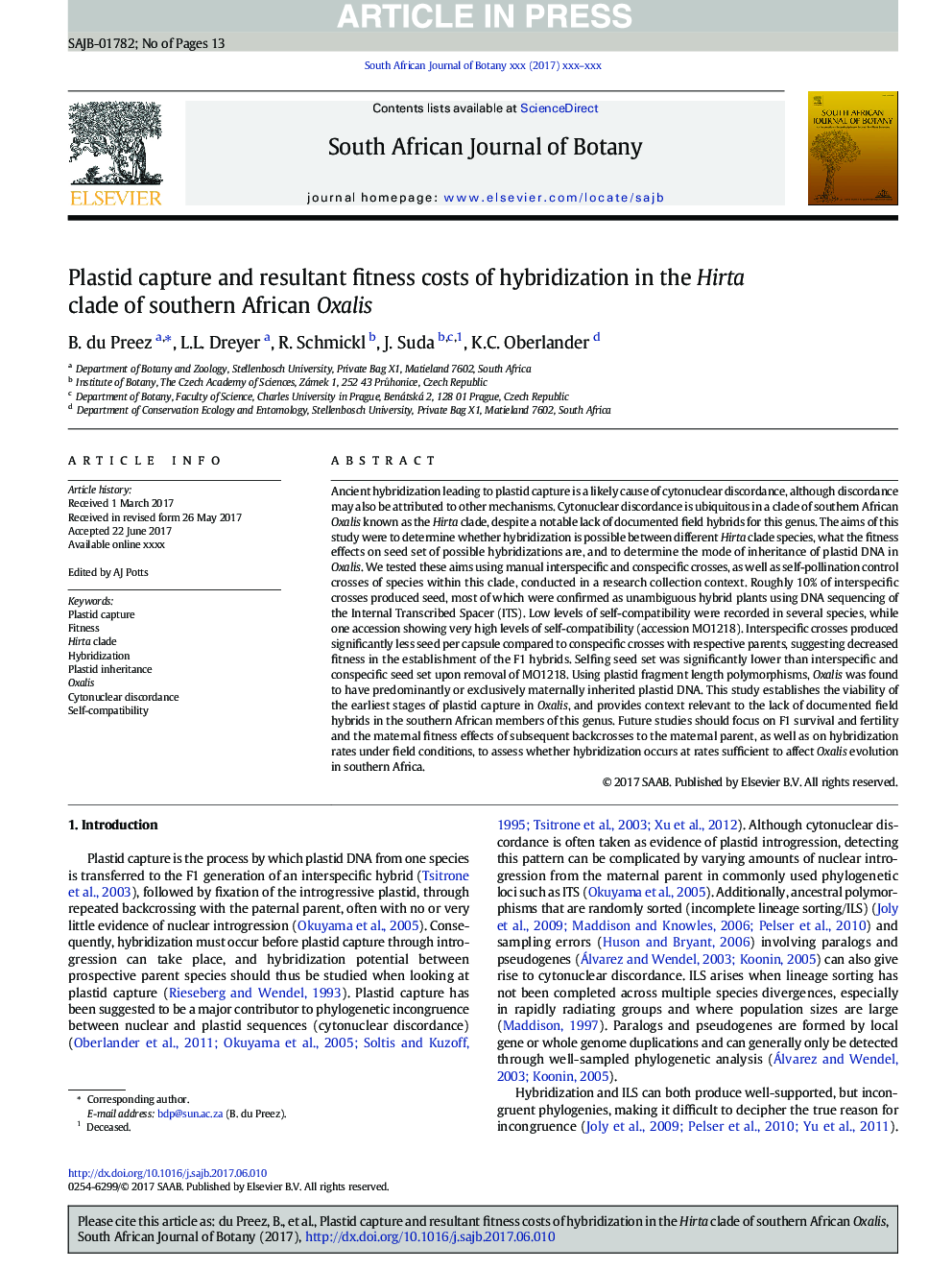| کد مقاله | کد نشریه | سال انتشار | مقاله انگلیسی | نسخه تمام متن |
|---|---|---|---|---|
| 11033229 | 1625140 | 2018 | 13 صفحه PDF | دانلود رایگان |
عنوان انگلیسی مقاله ISI
Plastid capture and resultant fitness costs of hybridization in the Hirta clade of southern African Oxalis
دانلود مقاله + سفارش ترجمه
دانلود مقاله ISI انگلیسی
رایگان برای ایرانیان
کلمات کلیدی
موضوعات مرتبط
علوم زیستی و بیوفناوری
علوم کشاورزی و بیولوژیک
علوم زراعت و اصلاح نباتات
پیش نمایش صفحه اول مقاله

چکیده انگلیسی
Ancient hybridization leading to plastid capture is a likely cause of cytonuclear discordance, although discordance may also be attributed to other mechanisms. Cytonuclear discordance is ubiquitous in a clade of southern African Oxalis known as the Hirta clade, despite a notable lack of documented field hybrids for this genus. The aims of this study were to determine whether hybridization is possible between different Hirta clade species, what the fitness effects on seed set of possible hybridizations are, and to determine the mode of inheritance of plastid DNA in Oxalis. We tested these aims using manual interspecific and conspecific crosses, as well as self-pollination control crosses of species within this clade, conducted in a research collection context. Roughly 10% of interspecific crosses produced seed, most of which were confirmed as unambiguous hybrid plants using DNA sequencing of the Internal Transcribed Spacer (ITS). Low levels of self-compatibility were recorded in several species, while one accession showing very high levels of self-compatibility (accession MO1218). Interspecific crosses produced significantly less seed per capsule compared to conspecific crosses with respective parents, suggesting decreased fitness in the establishment of the F1 hybrids. Selfing seed set was significantly lower than interspecific and conspecific seed set upon removal of MO1218. Using plastid fragment length polymorphisms, Oxalis was found to have predominantly or exclusively maternally inherited plastid DNA. This study establishes the viability of the earliest stages of plastid capture in Oxalis, and provides context relevant to the lack of documented field hybrids in the southern African members of this genus. Future studies should focus on F1 survival and fertility and the maternal fitness effects of subsequent backcrosses to the maternal parent, as well as on hybridization rates under field conditions, to assess whether hybridization occurs at rates sufficient to affect Oxalis evolution in southern Africa.
ناشر
Database: Elsevier - ScienceDirect (ساینس دایرکت)
Journal: South African Journal of Botany - Volume 118, September 2018, Pages 329-341
Journal: South African Journal of Botany - Volume 118, September 2018, Pages 329-341
نویسندگان
B. du Preez, L.L. Dreyer, R. Schmickl, J. Suda, K.C. Oberlander,